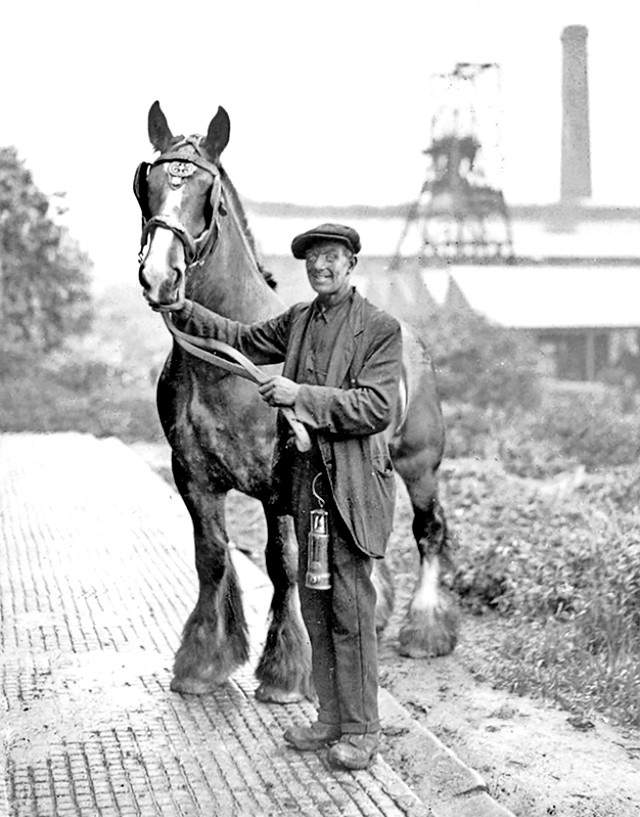Pit ponies, also known as mining horses, were small breeds of horses or ponies used in underground coal mines to haul carts filled with coal or other materials. Their use spanned from the 18th century into the mid-20th century, particularly in countries with extensive coal mining operations like the United Kingdom, the United States, Canada, and parts of Europe. These animals were meant to live in fields and roam freely – but instead, they spent their lives underground, pulling heavy carts, breathing in coal dust, and rarely seeing daylight.
The first known recorded use of ponies underground in Great Britain was in the Durham coalfield in 1750. Following the drowning deaths of 26 children when the Huskar Colliery in Silkstone flooded on July 4, 1838, A report was published in The Times, and the wider British public learned for the first time that women and children worked in the mines. There was a public outcry, led by politician and reformer Anthony Ashley Cooper, later Lord Shaftesbury, who then introduced the Mines and Collieries Act 1842 to Parliament which barred women, girls and boys under 10 (later amended to 13) from working underground, leading to the widespread use of horses and ponies in mining in England, though child labour lingered on to varying extents until finally eliminated by a variety of factors including further laws, improved inspection regimes, and changing economics.
In the United States, mules outnumbered ponies in mines. The use of ponies was never common in the US, though ponies were used in Appalachian coal fields in the mid-20th century.
Ponies worked alongside miners, entering the mine shafts never to return, learning to move through dark tunnels instead of open trails. They often worked long hours, sometimes up to 16 hours per day. In many cases, ponies were stabled underground, sometimes for years, only brought to the surface for rest or retirement. Tragically, many of them went nearly blind — their eyes unable to manage the brightness of the sun they hadn’t seen in so long.
These ponies weren’t just beasts of burden. They were quiet companions in one of the harshest environments, victims of an industry that took everything from them and gave little in return.























.jpg)





0 comments:
Post a Comment